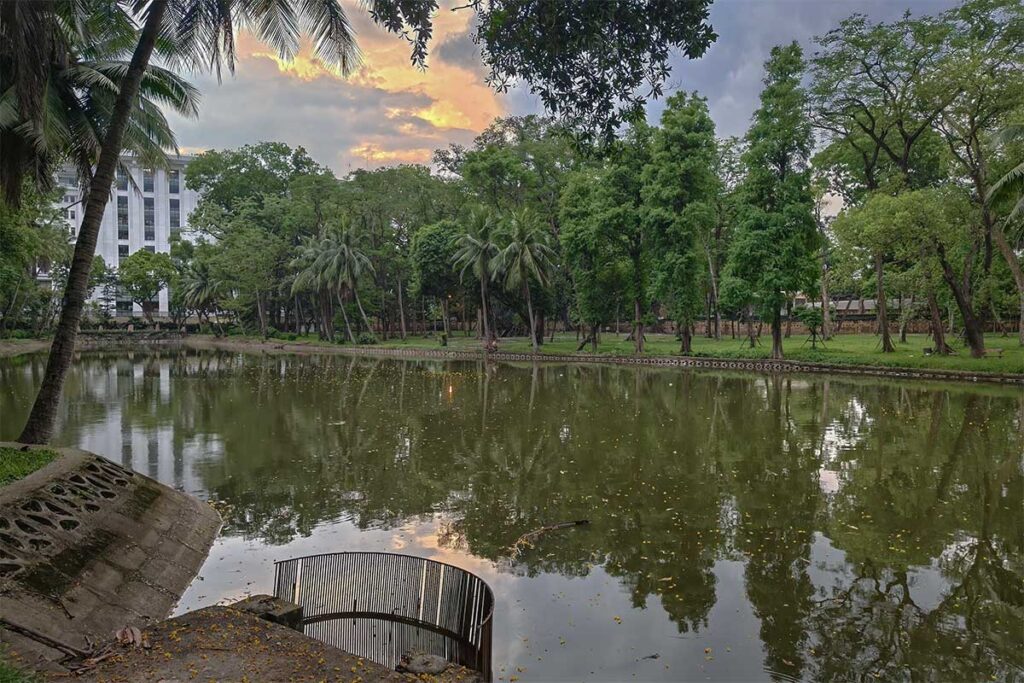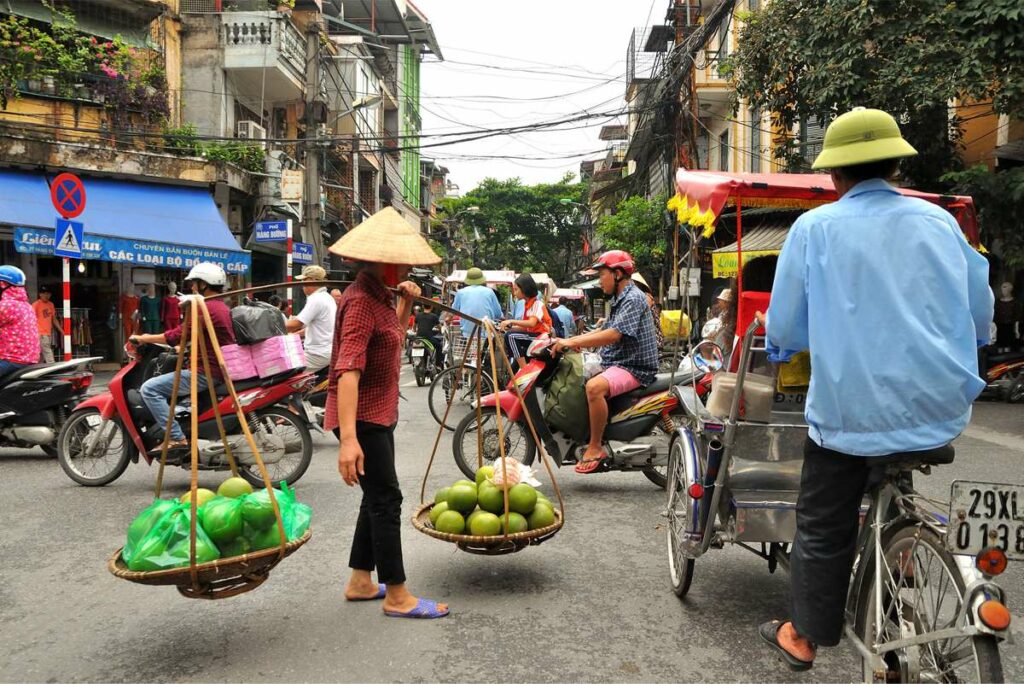Bach Thao Park: Hanoi’s Botanical Garden
Bach Thao Park, officially known as the Hanoi Botanical Gardens, is a large green space located in Ba Dinh District, just a short walk from some of Hanoi’s most important landmarks. Covering around 10 hectares today, the name Bach Thao translates to “hundreds of plants,” reflecting its variety of tropical trees, palms, and flowering species spread across gently sloping terrain and a central lake.
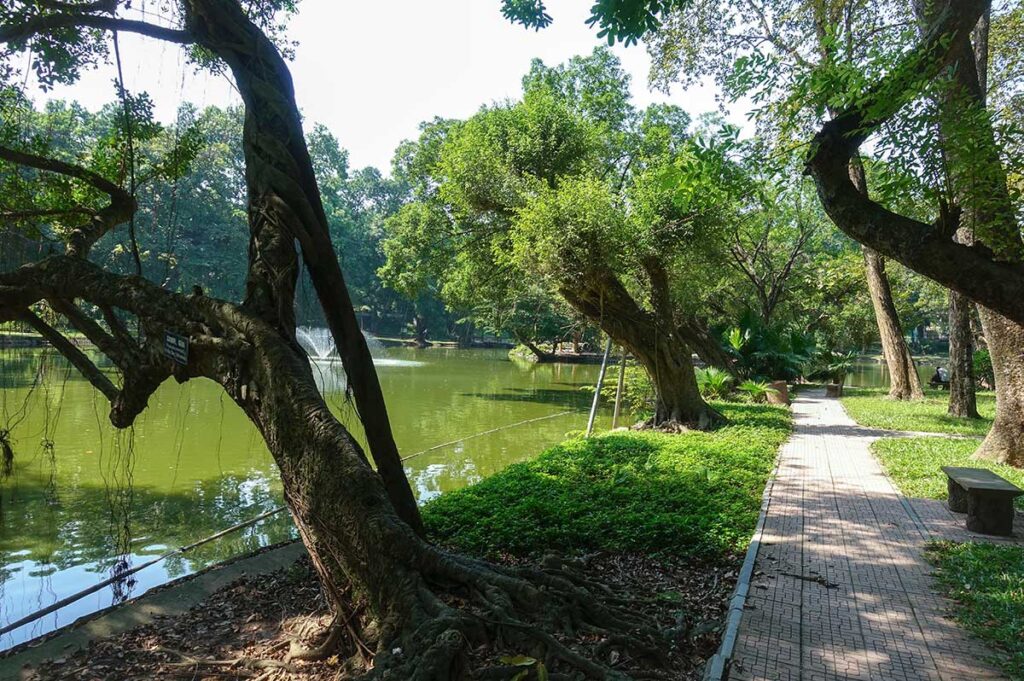
Originally established in 1890 by the French as part of their colonial botanical research efforts, the garden was once much larger — about 33 hectares — and even included a small zoo. Over time, parts of the grounds were repurposed for government use, and the animal collections were largely moved to other facilities. What remains today is a peaceful park where locals come to jog, play badminton, feed pigeons, or simply relax under the canopy of old trees.
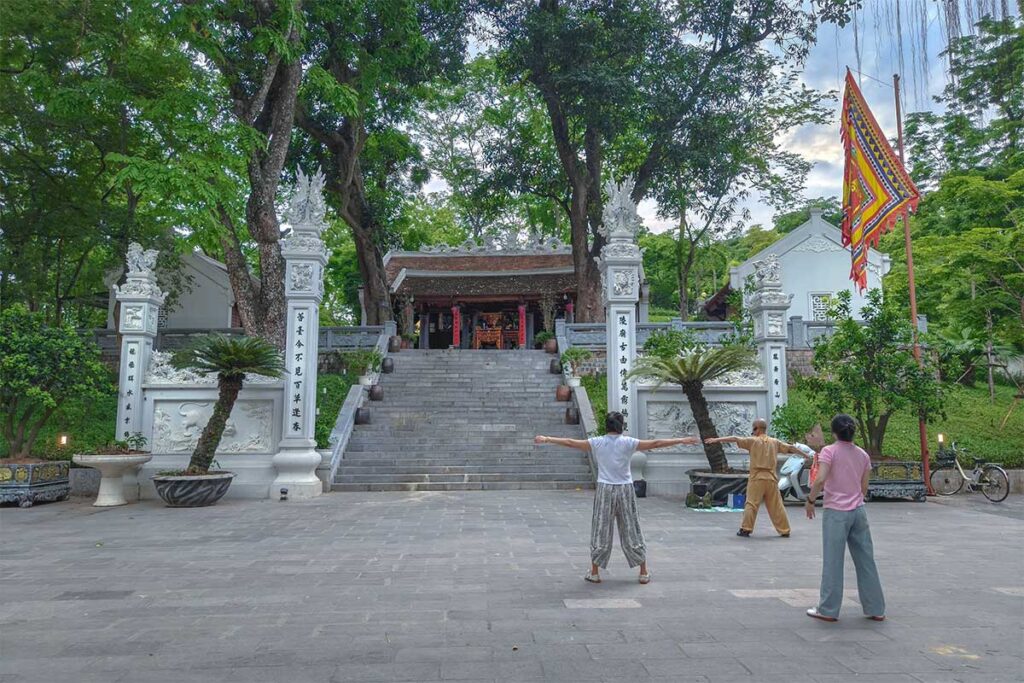
While the garden still offers shade and quiet corners, its reputation is mixed — especially among foreign visitors. The biggest point of controversy is the presence of small, outdated animal cages with monkeys and birds, which many find upsetting. Still, thanks to its central location and proximity to major cultural sites, Bach Thao Park occasionally draws curious travelers looking for a breather between Hanoi’s more high-profile attractions.
What is there to see at Hanoi Botanical Garden
Despite the name, Hanoi Botanical Garden (Bach Thao Park) feels more like a public park than a formal botanical collection. Still, there are several things to explore as you walk through its shaded grounds.
1. Trees and Plants
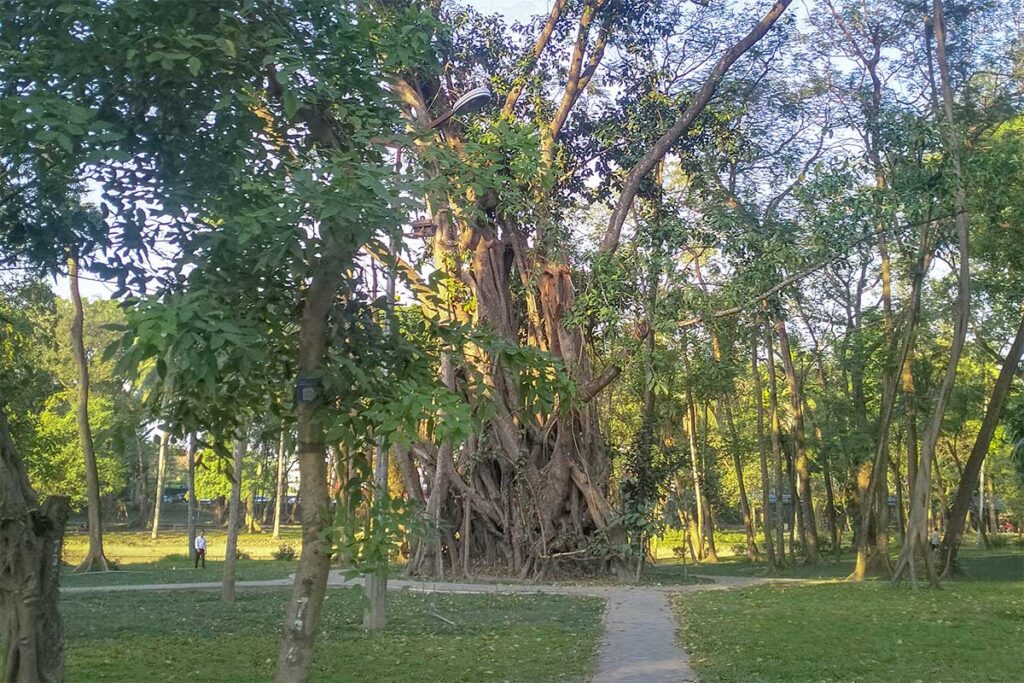
The park is home to a mix of tropical trees and ornamental plants, including banyan trees, palms, coconut trees, and occasional clusters of orchids.

Some trees have small signs or QR codes identifying their species, but don’t expect in-depth botanical labeling or curated gardens. This isn’t a scientific or landscaped botanical garden in the Western sense — it’s more of a leafy urban escape with natural overgrowth and scattered plantings.
2. Vi Danh Lake
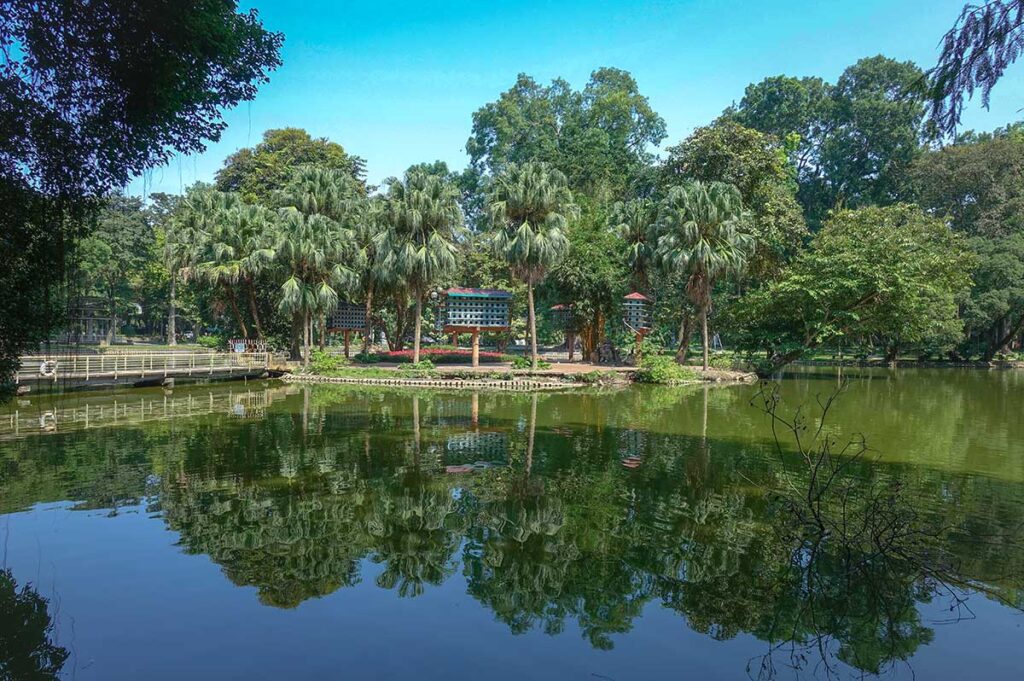
At the center of the park is Vi Danh Lake, a small body of water surrounded by tall trees and often dotted with lotus flowers. There’s a short footbridge crossing a narrow section of the lake, and the area attracts ducks, turtles, and fish. It’s a quiet, photogenic part of the park, especially in the early morning or late afternoon light.
3. Pigeon Island
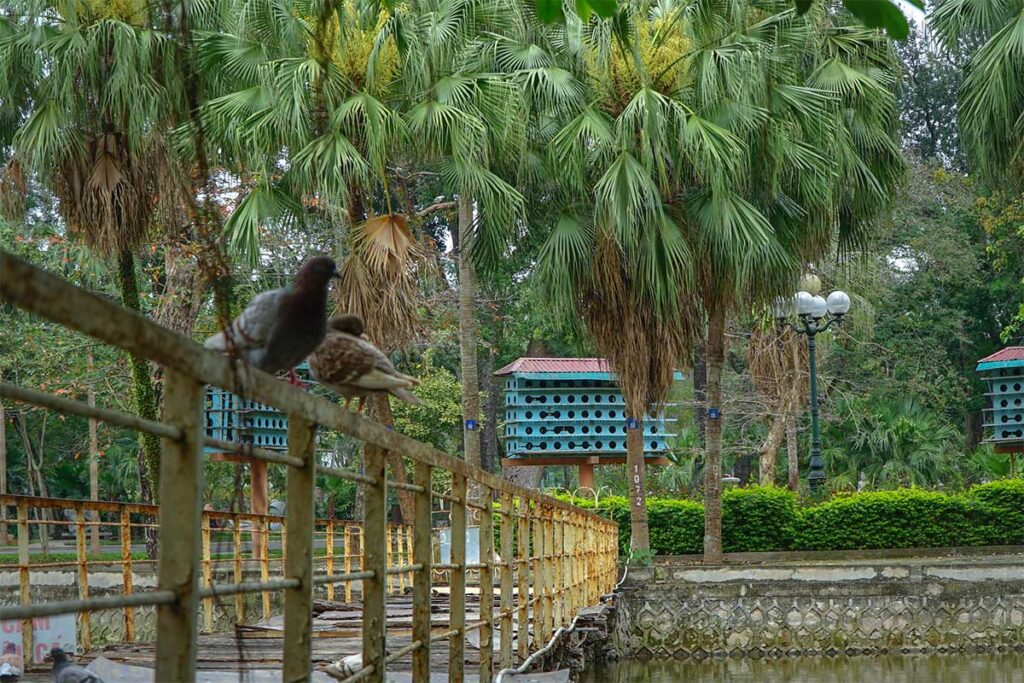
Near the middle of the park is a grassy area nicknamed “Pigeon Island” for its unusually large and well-fed pigeons. Most are all-white or classic grey, and you’ll often see them clustered together waiting to be fed. It’s a hit with small children, and some visitors bring crumbs or seeds to attract the birds up close.
4. Caged Animals
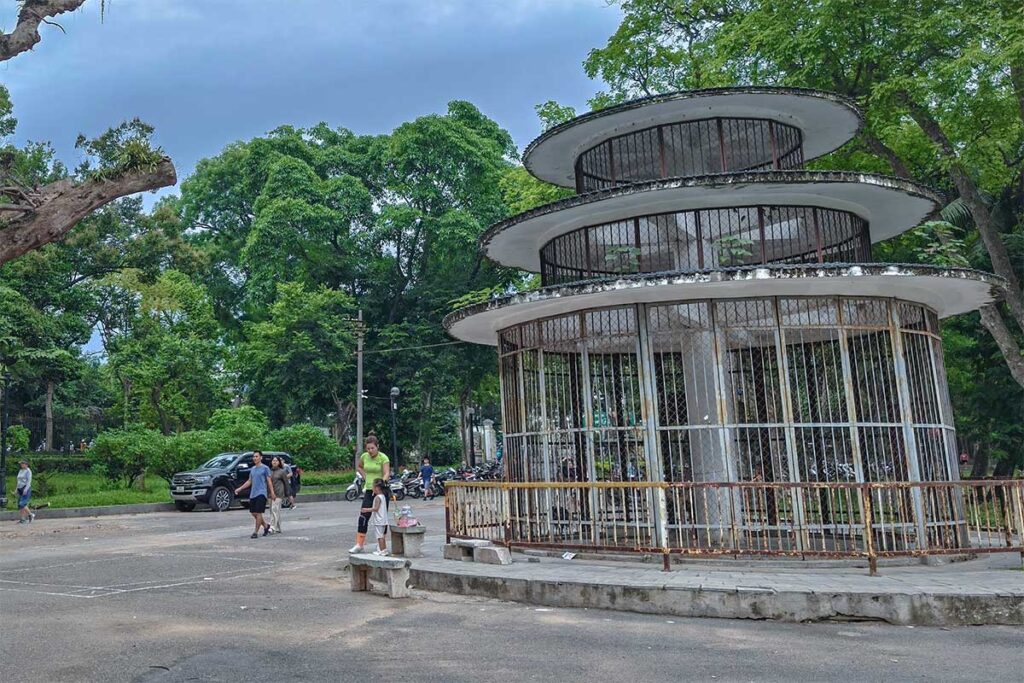
One of the most controversial aspects of the garden is the presence of small animal enclosures. You’ll find monkeys and birds (especially peacocks) kept in cramped metal cages with little shade or enrichment. These cages are outdated and poorly maintained, and many visitors find them distressing. While they remain a feature of the park, it’s worth knowing in advance in case you’d prefer to avoid this area.
5. Sculptures and Open Spaces
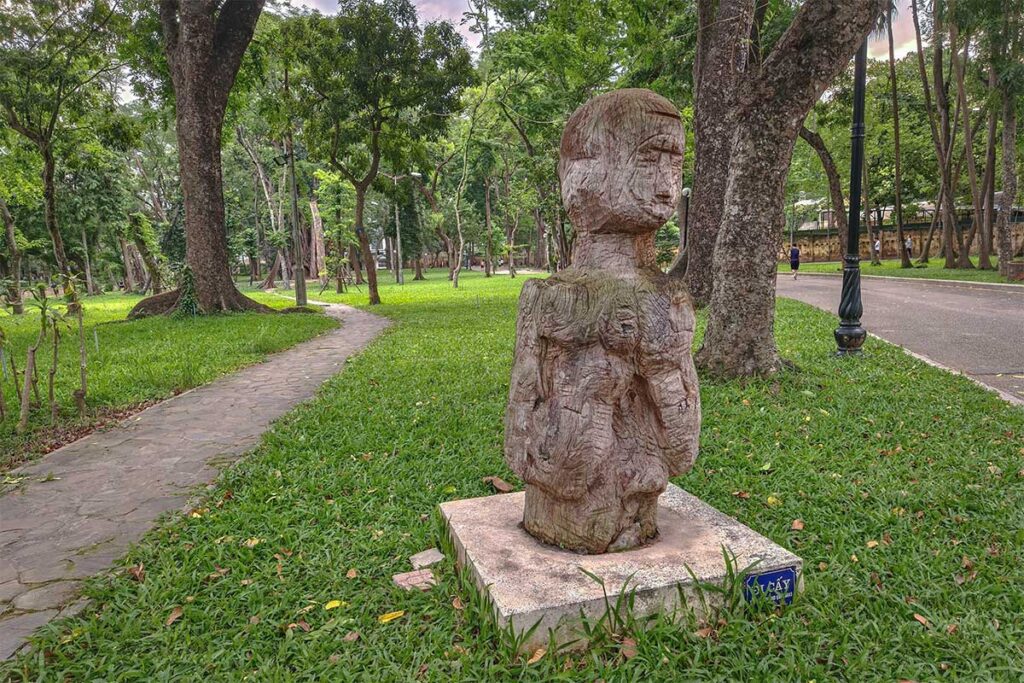
Throughout the park are a few simple statues and sculptural elements, though none are major artistic landmarks. The broader appeal comes from the open lawns, shady paths, and local activity: tai chi, badminton, jogging, and dancing are all common in the mornings and evenings. It’s not a manicured garden but more of a natural-feeling urban green space.
How to get there
The Hanoi Botanical Gardens are located in Ba Dinh District, close to major landmarks like the Ho Chi Minh Mausoleum and One Pillar Pagoda. Getting there is easy, especially if you’re already exploring central Hanoi or staying in the Old Quarter.
Grab or Taxi
The simplest way to reach Bach Thao Park is by Grab or taxi. From the Old Quarter or West Lake area, the ride takes about 5 to 10 minutes depending on traffic. A motorbike Grab usually costs around 20,000–30,000 VND, while a GrabCar or taxi can range from 40,000–60,000 VND.
There are two entrances to the park:
- The main gate is on Hoang Hoa Tham Street, where most cars and bikes drop passengers.
- A secondary entrance is on Ngoc Ha Street, closer to the Ho Chi Minh Museum and often used by pedestrians.
Make sure your driver knows you want “Vườn Bách Thảo” or show the Vietnamese name in your app to avoid confusion with other parks.
Walking
If you’re already visiting nearby attractions like the Ho Chi Minh Mausoleum, One Pillar Pagoda, or Ho Chi Minh Museum, it’s an easy walk to the botanical gardens. From the main Ba Dinh complex, walk along Ngoc Ha Street or Hoang Hoa Tham Street — both are leafy and relatively quiet compared to Hanoi’s busier roads.
Walking is often the nicest option if you want a short break from sightseeing without dealing with transport. Just be aware that signage to the park is minimal, so a map app helps for navigation.
What is nearby?
One of the main reasons to visit the Hanoi Botanical Gardens is their location — right next to some of the city’s most important cultural and historical landmarks. If you’re already in the area for sightseeing, it’s easy to add a short walk through Bach Thao Park into your day.
Ho Chi Minh Mausoleum
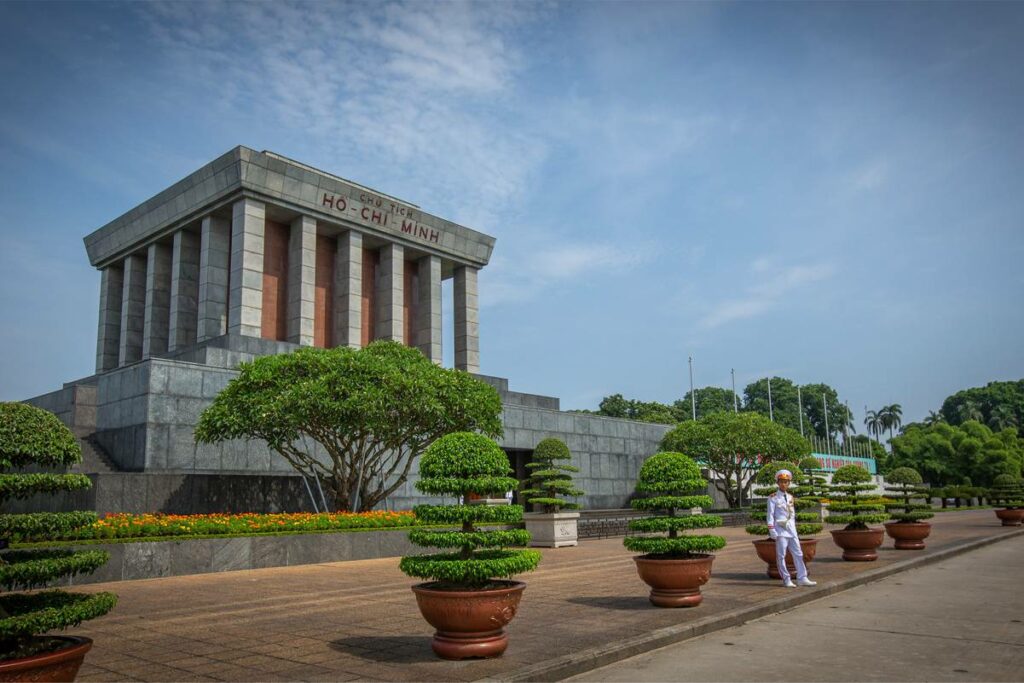
The Ho Chi Minh Mausoleum is just a few minutes from the park gates. This monumental structure is the final resting place of Ho Chi Minh and remains one of Hanoi’s most visited landmarks, especially in the early morning when public viewings take place.
Ho Chi Minh Museum
Behind the mausoleum, the Ho Chi Minh Museum offers an in-depth look at the life, ideology, and legacy of Vietnam’s revolutionary leader. Its symbolic architecture and historical displays make it a worthwhile stop for those interested in modern Vietnamese history.
Ho Chi Minh’s Stilt House
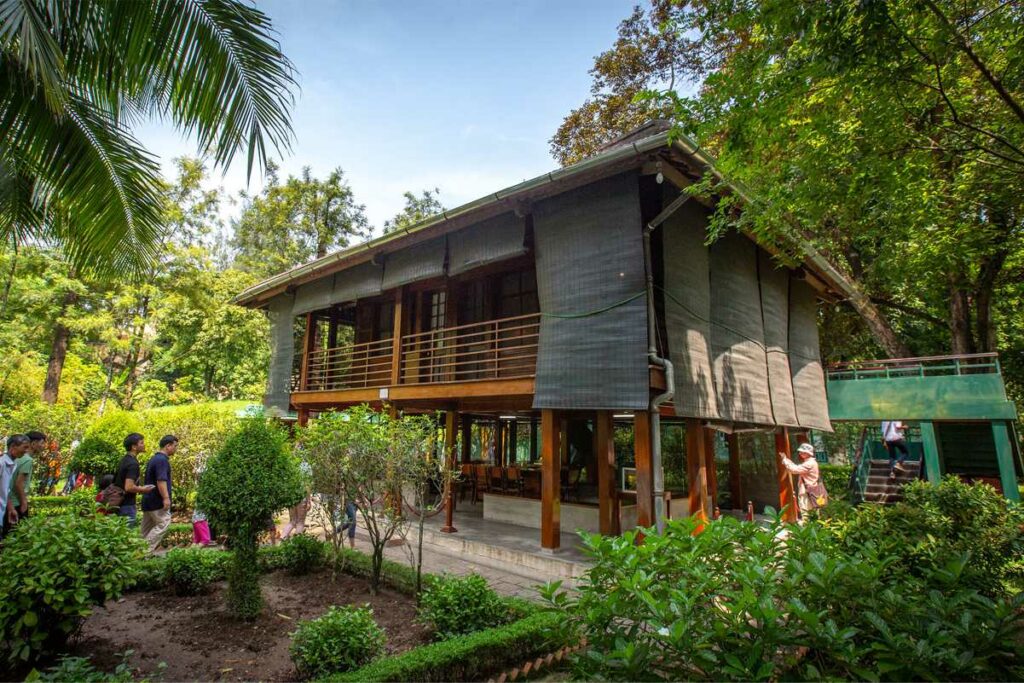
Within the same complex, Ho Chi Minh’s Stilt House sits in a peaceful garden setting. This modest wooden home, where Ho Chi Minh lived and worked in his later years, provides a quiet contrast to the formal tone of the mausoleum.
One Pillar Pagoda
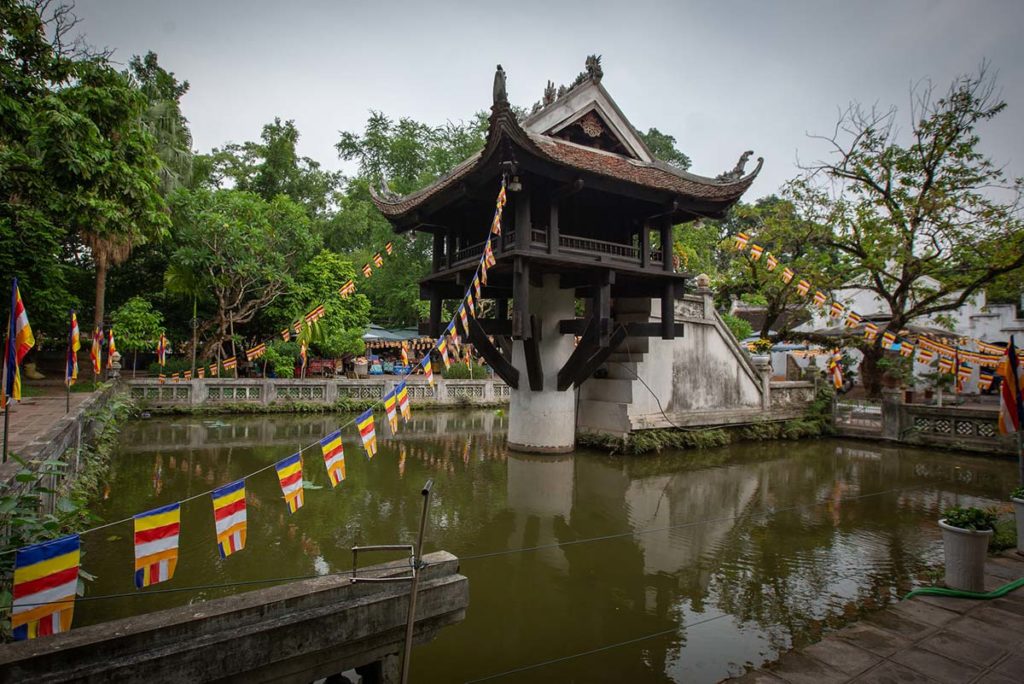
Just a short walk from the museum, the One Pillar Pagoda is a small but iconic Buddhist temple built on a single stone pillar rising from a lotus pond. It’s one of the most photographed religious sites in Hanoi.
West Lake (Ho Tay)
Roughly 10 to 15 minutes on foot from the gardens, West Lake is Hanoi’s largest freshwater lake. With waterside temples, cafes, and scenic walking paths, it’s a nice extension to your visit if you’re continuing north from Ba Dinh.
Is the Hanoi Botanical Gardens worth visiting?
The Hanoi Botanical Gardens aren’t a must-see attraction — it’s more of a local park than a true botanical garden. While the trees and lake offer some shade and calm, there’s little in the way of curated plant displays or structured gardens. For many international visitors, the biggest issue is the small, poorly maintained animal cages, which can leave a negative impression.
That said, if you’re already nearby — visiting the Ho Chi Minh Mausoleum or One Pillar Pagoda — and want a short break from busy tourist sites, Bach Thao Park can be a peaceful place for a stroll. Just don’t expect much beyond open space, a few statues, and casual local activity like jogging or tai chi.
If you’re looking for a proper green escape or a more enjoyable park experience, other places in the city are better suited — see our guide to the Best parks in Hanoi.
